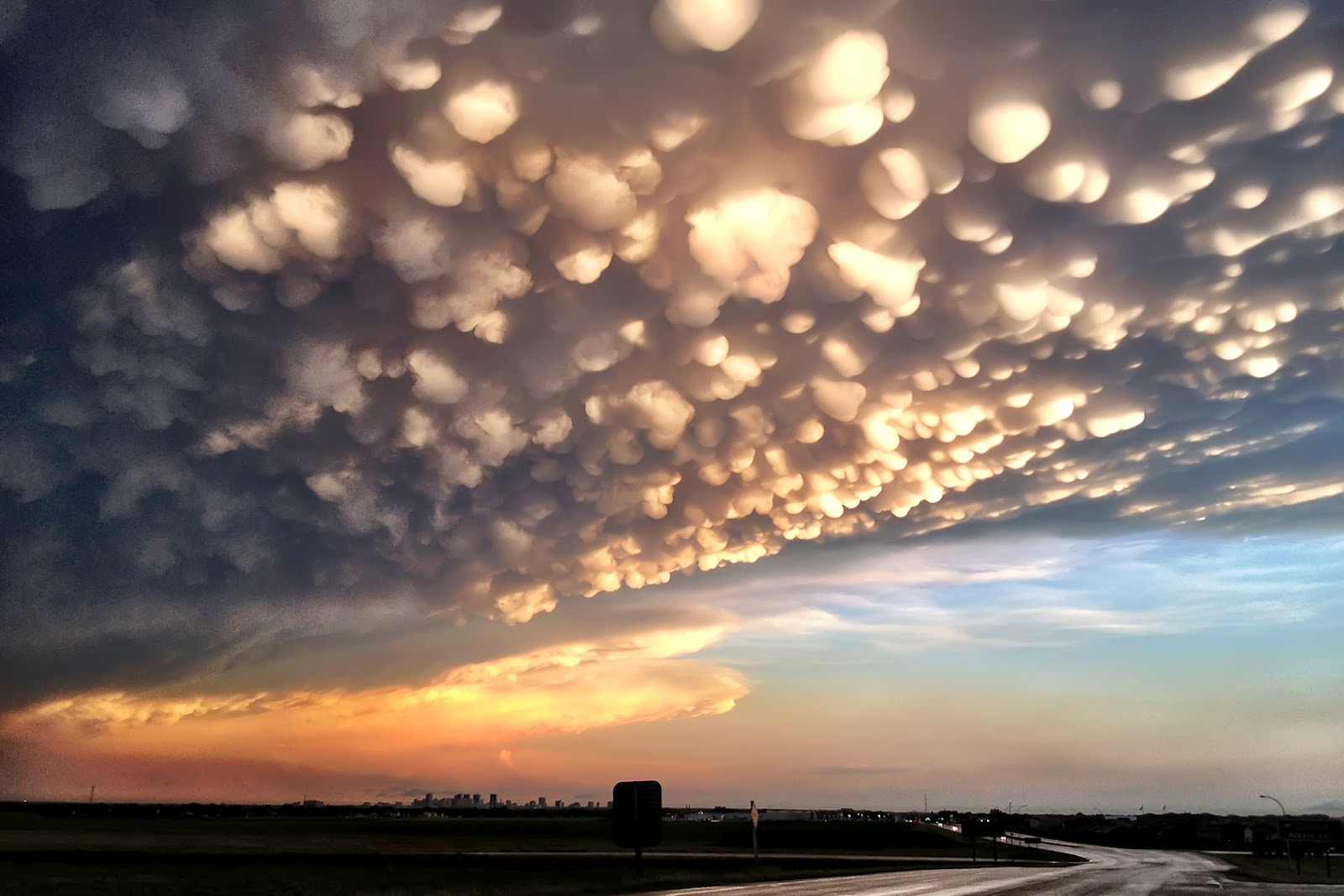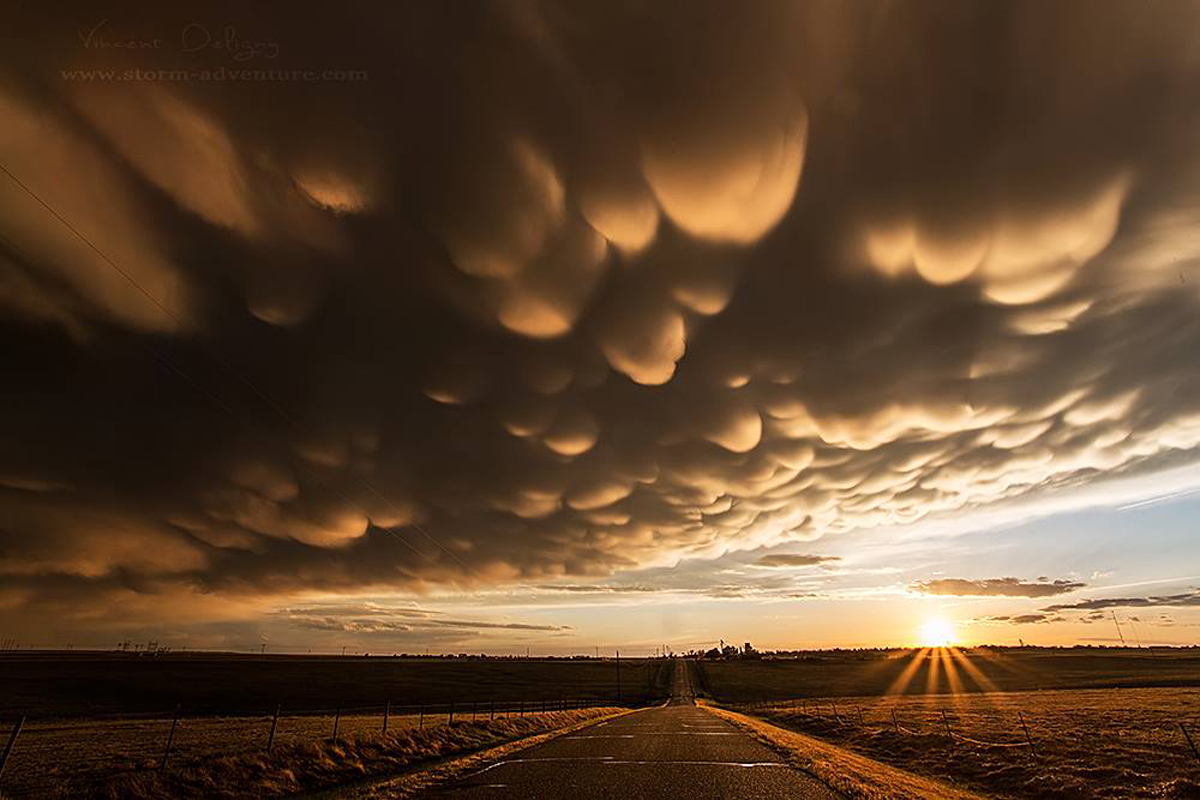Mammatus clouds are among the most fascinating and visually striking cloud formations in the sky. These unusual clouds often resemble large, pouch-like structures that hang from the base of a parent cloud, creating a dramatic and beautiful sight that captures the attention of onlookers. Although they can appear quite ominous, mammatus clouds are not necessarily a sign of severe weather; instead, they serve as a reminder of the complex and dynamic nature of our atmosphere.
These clouds often form in the aftermath of thunderstorms or severe weather events, which is why they are typically associated with turbulent conditions. However, the presence of mammatus clouds can also be seen as a sign of the calming phase following a storm, as they can occur when the air is settling after intense convective activity. The unique texture and appearance of mammatus clouds make them a favorite subject among photographers and weather enthusiasts alike, as they provide a stunning visual experience.
In this article, we will delve deeper into the world of mammatus clouds, exploring their formation, appearance, and the science behind these captivating formations. Additionally, we will answer some common questions about these clouds and discuss their significance in weather observation.
**What Are Mammatus Clouds?**
Mammatus clouds are a specific type of cloud formation characterized by their distinctive pouch-like shapes that project downward from the base of a cumulonimbus or other cloud. These formations can vary in size and density, often creating a surreal and ethereal appearance in the sky. The name "mammatus" is derived from the Latin word "mamma," which means "udder" or "breast," due to their resemblance to these anatomical features.
**How Do Mammatus Clouds Form?**
The formation of mammatus clouds typically occurs during or after severe weather events, such as thunderstorms. They develop when cold air sinks rapidly within a cloud, causing the surrounding moisture to condense and create the characteristic pouches. The presence of mammatus clouds is often indicative of unstable atmospheric conditions, which can lead to severe weather phenomena, including heavy rain, lightning, and strong winds.
**What Weather Conditions Are Associated with Mammatus Clouds?**
Mammatus clouds are often associated with the following weather conditions:
- Thunderstorms and severe weather events
- Heavy rainfall and strong winds
- Atmospheric instability
- Calming periods following intense weather
**Why Are Mammatus Clouds Significant?**
The significance of mammatus clouds extends beyond their stunning appearance. Meteorologists often study these cloud formations to gain insight into atmospheric conditions and weather patterns. Observing mammatus clouds can provide valuable information about the stability of the atmosphere and the potential for severe weather. Additionally, their presence can serve as a visual cue for weather enthusiasts and photographers, making them a popular subject for capturing breathtaking images of the sky.
**Are Mammatus Clouds Dangerous?**
While mammatus clouds can appear ominous, they are not inherently dangerous. They are often associated with severe weather, but their presence does not guarantee that a storm is imminent. Instead, they can indicate that the atmosphere is unstable, and caution should be exercised when observing them. It is essential for individuals to stay informed about weather conditions and to monitor local forecasts, especially when mammatus clouds are present.
**How Can You Photograph Mammatus Clouds?**
Photographing mammatus clouds can be a rewarding experience, but it requires careful planning and attention to detail. Here are some tips for capturing these unique cloud formations:
- Choose the right time: Mammatus clouds are often most visible in the late afternoon or early evening after a storm.
- Find a good vantage point: Look for an open area with a clear view of the sky, away from obstructions like trees and buildings.
- Use the right equipment: A DSLR or mirrorless camera with a wide-angle lens is ideal for capturing the full expanse of the clouds.
- Experiment with angles: Try different perspectives and compositions to create visually stunning images.
**What Are Some Notable Examples of Mammatus Clouds?**
Mammatus clouds have been observed in various locations around the world, captivating observers with their beauty and unusual shapes. Some noteworthy examples include:
- The mammatus clouds observed over the Great Plains during summer thunderstorms.
- The dramatic formations seen during severe weather outbreaks in the Southeastern United States.
- Stunning images captured over coastal regions, often enhanced by sunset colors.
**Can Mammatus Clouds Be Predicted?**
While meteorologists cannot predict the exact formation of mammatus clouds, they can identify conditions that are conducive to their development. By analyzing atmospheric instability and monitoring severe weather patterns, forecasters can provide warnings when conditions are ripe for the appearance of these unique clouds. However, the unpredictable nature of weather means that sightings can often be spontaneous and surprising.
**Conclusion: The Allure of Mammatus Clouds**
In conclusion, mammatus clouds are a captivating phenomenon that showcases the beauty and complexity of our atmosphere. Their unique formation and striking appearance make them a subject of fascination for many, from meteorologists to photographers and casual observers alike. While they can be associated with severe weather, their presence also serves as a reminder of the ever-changing nature of the sky above us. Whether you are an avid weather enthusiast or simply someone who enjoys taking in the beauty of nature, mammatus clouds offer a stunning spectacle worth appreciating.




